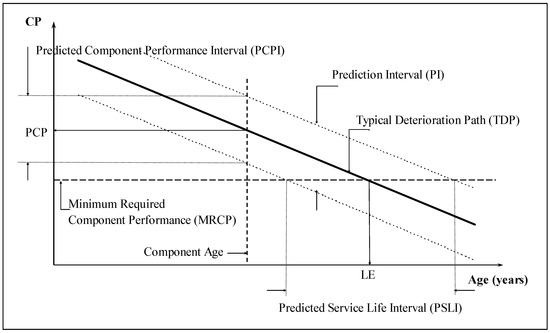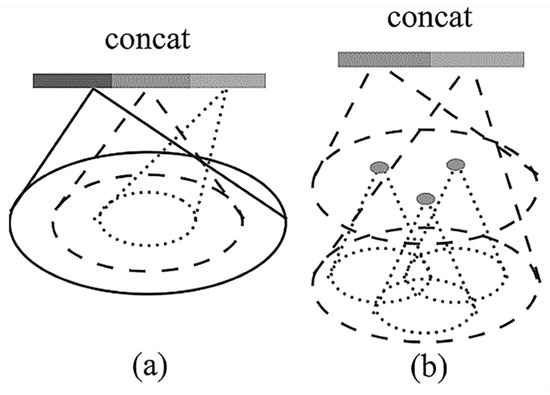Smart Buildings
Share This Topical Collection
Editors
 Dr. Habtamu Bayera Madessa
Dr. Habtamu Bayera Madessa
 Dr. Habtamu Bayera Madessa
Dr. Habtamu Bayera Madessa
E-Mail
Website1
Website2
Collection Editor
Department of Civil Engineering and Energy Technology, OsloMet—Oslo Metropolitan University, Pilestredet 35, PB 4, Saint Olavs Plass, 0130 Oslo, Norway
Interests: building energy and indoor environment performance; energy system; solar energy; PCM; building physics; optimization
Topical Collection Information
Dear Colleagues,
According to an International Energy Agency (IEA) report, all new buildings should be zero-carbon ready by 2030, and 50% of the existing buildings should be retrofitted to a zero-carbon level by 2040 to reach the net-zero emission (NZE) strategy by 2050. Achieving high energy efficiency for new constructions, significantly reducing the energy usage of existing old buildings, and ensuring the increasing usage of on-site renewable energy became the primary goals for building sectors. This essentially leads to “smart, sustainable and inclusive” growth towards an energy-efficient and low-carbon economy. The strategic goal of achieving smart buildings relies on smart design, based on smart shapes, smart envelopes, smart systems, and smart materials, including smart management and smart user behaviors. The building quality objectives in terms of functionality, indoor well-being, efficiency and environmental impacts, and competitiveness could be achieved by smart buildings throughout their entire life cycle.
This topical collection solicits novel works in the domain of smart buildings. The following topics are proposed for this collection (but it is not limited to them):
- Energy-efficient retrofit solutions for buildings.
- Advanced building materials.
- Digitalization and smart controls in buildings.
- Building data analytics.
- Nearly zero-energy buildings and zero-emission buildings.
- District heating networks.
- Heat pumping technology.
- Green infrastructures.
- LCA and carbon assessments.
- Environmental assessment methods.
- Distributed solar PV.
- Indoor air quality management.
- Sustainable built environment.
Dr. Arnab Chaudhuri
Dr. Carlos Jimenez-Bescos
Dr. Habtamu Bayera Madessa
Collection Editors
Manuscript Submission Information
Manuscripts should be submitted online at www.mdpi.com by registering and logging in to this website. Once you are registered, click here to go to the submission form. Manuscripts can be submitted until the deadline. All submissions that pass pre-check are peer-reviewed. Accepted papers will be published continuously in the journal (as soon as accepted) and will be listed together on the collection website. Research articles, review articles as well as short communications are invited. For planned papers, a title and short abstract (about 100 words) can be sent to the Editorial Office for announcement on this website.
Submitted manuscripts should not have been published previously, nor be under consideration for publication elsewhere (except conference proceedings papers). All manuscripts are thoroughly refereed through a single-blind peer-review process. A guide for authors and other relevant information for submission of manuscripts is available on the Instructions for Authors page. Applied Sciences is an international peer-reviewed open access semimonthly journal published by MDPI.
Please visit the Instructions for Authors page before submitting a manuscript.
The Article Processing Charge (APC) for publication in this open access journal is 2400 CHF (Swiss Francs).
Submitted papers should be well formatted and use good English. Authors may use MDPI's
English editing service prior to publication or during author revisions.
Keywords
- healthy buildings
- retrofit solutions
- energy efficiency
- embodied carbon
- renewable energy
- smart materials
- indoor air quality
- thermal comfort
- built environment
- model-based predictive control
- sustainability
Published Papers (4 papers)
Open AccessReview
Enhancing District Heating System Efficiency: A Review of Return Temperature Reduction Strategies
by
Hakan İbrahim Tol and Habtamu Bayera Madessa
Cited by 1 | Viewed by 3709
Abstract
This review paper provides a comprehensive examination of current strategies and technical considerations for reducing return temperatures in district heating (DH) systems, aiming to enhance the utilization of available thermal energy. Return temperature, a parameter indirectly influenced by various system-level factors, cannot be
[...] Read more.
This review paper provides a comprehensive examination of current strategies and technical considerations for reducing return temperatures in district heating (DH) systems, aiming to enhance the utilization of available thermal energy. Return temperature, a parameter indirectly influenced by various system-level factors, cannot be adjusted directly but requires careful management throughout the design, commissioning, operation, and control phases. This paper explores several key factors affecting return temperature, including DH network, heat storage, and control strategies as well as the return temperature effect on the heat source. This paper also considers the influence of non-technical aspects, such as pricing strategies and maintenance practices, on system performance. The discussion extends to the complex interplay between low return temperatures and temperature differences, and between operational temperature schemes and economic considerations. Concluding remarks emphasize the importance of adopting a holistic approach that integrates technical, operational, and economic factors to improve DH system efficiency. This review highlights the need for comprehensive system-level optimization, effective management of system components, and consideration of unique heat production characteristics. By addressing these aspects, this study provides a framework for advancing DH system performance through optimized return temperature management.
Full article
►▼
Show Figures
Open AccessReview
The Smart Buildings Revolution: A Comprehensive Review of the Smart Readiness Indicator Literature
by
Taraneh Delavar, Eerika Borgentorp and Seppo Junnila
Cited by 7 | Viewed by 4935
Abstract
The construction industry is embracing advanced digital technologies, such as the Internet of Things and automation systems, to enhance energy management and occupant comfort in smart buildings. Recognizing the need to assess the readiness of buildings to support energy-efficient and adaptive functionalities, the
[...] Read more.
The construction industry is embracing advanced digital technologies, such as the Internet of Things and automation systems, to enhance energy management and occupant comfort in smart buildings. Recognizing the need to assess the readiness of buildings to support energy-efficient and adaptive functionalities, the European Commission introduced the smart readiness indicator (SRI) in 2018. While the SRI provides a standardized framework, its adoption, limitations, and potential to drive the evolution of smart buildings remain underexplored. This study addresses these gaps through a systematic literature review, incorporating bibliometric and qualitative analyses to evaluate the state of research on the SRI. The bibliometric analysis reveals that research on smart readiness is growing rapidly, with a strong focus on energy efficiency and smart buildings. This literature primarily evaluates and promotes the adoption of the SRI within buildings, aligning with the need to explore the paths for the evolution of smart buildings. The qualitative review summarizes six understudied research topic required to drive the evolution of smart buildings in the literature:
The applicability of the SRI to different contexts, including various building types and climatic conditions;
the subjectivity in the framework;
the alignment with other certificates and standards;
the SRI as a tool for smart retrofit;
expansion to the neighborhood and district levels; and
the score correlation with energy performance. The findings show that, although the SRI was originally introduced for buildings, it has much wider applicability, at the more detailed building component level as well as at the broader neighborhood and district levels. Future research could focus on the role of the SRI in evaluating smart readiness at the neighborhood scale and determining the minimum acceptable SRI score.
Full article
►▼
Show Figures
Open AccessArticle
Service Life Prediction and Life Cycle Costs of Light Weight Partitions
by
Alon Urlainis, Monica Paciuk and Igal M. Shohet
Cited by 2 | Viewed by 1946
Abstract
This study investigates the life expectancy (LE) and life cycle costs (LCC) of three alternatives of interior partitions in residential units: gypsum board, autoclaved concrete block, and hollow concrete block partitions. The aim is to examine the sustainability and cost-effectiveness of these partitions
[...] Read more.
This study investigates the life expectancy (LE) and life cycle costs (LCC) of three alternatives of interior partitions in residential units: gypsum board, autoclaved concrete block, and hollow concrete block partitions. The aim is to examine the sustainability and cost-effectiveness of these partitions in various service and occupancy conditions. Three different service conditions were analyzed: Standard (constructed without faults), Inherent Defect Conditions (with initial, non-progressing defects), and Failure Conditions (developing defects over time). To analyze the impact of occupancy conditions, six ‘negative occupancy factors’ were identified that accelerate partition deterioration, including non-ownership, poor maintenance, high residential density, the presence of young children, the presence of domestic animals, and the density of furniture. These factors define four occupancy condition categories: light, moderate, standard, and intensive. The research found that hollow concrete block partitions are the most durable, exceeding 100 years in light or moderate conditions. Gypsum board partitions, while cost-effective, have a lower life expectancy, needing replacement in 11–27 years in intensive conditions. Autoclaved concrete blocks offer moderate durability, with similar costs to hollow blocks in normal conditions. Overall, the study highlights the influence of service and occupancy on the lifespan of interior building components, and provides recommendations for partition type selection that are based on specific conditions. These recommendations are a pivotal outcome, highlighting the study’s significant contribution to the understanding of the long-term performance and sustainability of building materials in residential construction.
Full article
►▼
Show Figures
Open AccessArticle
Research on the Intelligent Auxiliary Design of Subway Station Building Space Based on Deep Learning
by
Jiang An, Jiuhong Zhang and Mingxiao Ma
Cited by 2 | Viewed by 2391
Abstract
In recent years, deep learning methods have been used with increasing frequency to solve architectural design problems. This paper aims to study the spatial functional layout of deep learning-assisted generation subway stations. Using the PointNet++ model, the subway station point cloud data are
[...] Read more.
In recent years, deep learning methods have been used with increasing frequency to solve architectural design problems. This paper aims to study the spatial functional layout of deep learning-assisted generation subway stations. Using the PointNet++ model, the subway station point cloud data are trained and then collected and processed by the author. After training and verification, the following conclusions are obtained: (1) the feasibility of spatial deep learning for construction based on PointNet++ in the form of point cloud data is verified; (2) the effectiveness of PointNet++ for the semantic segmentation and prediction of metro station point cloud information is verified; and (3) the results show that the overall 9:1 training prediction data have 60% + MIOU and 75% + accuracy for 9:1 training prediction data in the space of 20 × 20 × 20 and a block_size of 10.0. This paper combines the deep learning of 3D point cloud data with architectural design, breaking through the original status quo of two-dimensional images as research objects. From the dataset level, the limitation that research objects such as 2D images cannot accurately describe 3D space is avoided, and more intuitive and diverse design aids are provided for architects.
Full article
►▼
Show Figures











